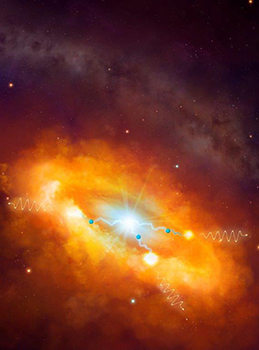Latest News Archive
Please select Category, Year, and then Month to display items
27 August 2019
|
Story Moeketsi Mogotsi
|
Photo Johan Roux
 Katleho Lechoo, newly elected SRC President on the Bloemfontein Campus and Sonawible Dwaba, outgoing SRC President.
Katleho Lechoo, newly elected SRC President on the Bloemfontein Campus and Sonawible Dwaba, outgoing SRC President.
The University of the Free State’s Student Representative Council (SRC) elections took place on the Bloemfontein,
Qwaqwa, and
South campuses during August.
The following candidates were successfully elected as 2019/2020 SRC members on our three respective campuses.
BLOEMFONTEIN CAMPUS SRC:President:Katleho Lechoo
Deputy President:Agobakwe Mboweni
Secretary:Nothabo Zungu
Treasurer:Zandile Makalima
Policy and Transformation:Kamohelo Thakheli
Student Development and First-Generation Students:Thobeka Buti
Commuter Students:Karabo Mtsweni
Associations Student Council:Mandilakhe Magalakanqa
Student Organisations Council:Dieketseng Motaung
Academic Student Council:Lebofsa Malete
Day Residence Council:Gert Terblanche
Campus Residence Council:Tyrone Willard
Postgraduate Student Council:Mahlomola Khasemene
International Student Council:Simba Matem
Student Media and Dialogue Council:Karabo Masike
Universal Access and Social Justice Council:Micaula Jewell
Civic and Social Responsibility Council:Nthato Musa
Arts and Culture Council:Motshidisi Rasego
Sports Council:Sphumelele Dube
QWAQWA CAMPUS SRC:President:Xolani Sandile Sibiya
Deputy President:Thembinkosi Phenyane
Secretary General:Nelisiwe Bridget Masango
Treasurer:Ntandoyenkosi Khumalo
Policy and Transformation:Bongiwe Nakile Khumalo
Student Development and First-Generation Students:Thokozani Siphiwe Zuma
Commuter Students:Thabiso Celimpilo Masuku
Media and Publicity:Simphiwe Sinenhlanhla Dube
Associations and Religious Affairs Student Council: Sicelo Mathews Twala
Campus Residence Council: Thabo Abraham Motaung
Arts and Culture Council:Andile Saviour Maseko
Academics Council:Siyabonga Mpumelelo Mbambo
Sports Council: Tshepiso Fortune Tshabalala
Universal Access and Social Justice Council: Siphamandla Joseph Shabangu
Postgraduate Student Council:Thato Karabo Moloi
International Student Council:Mamokete Mokhatla
SOUTH CAMPUS SRC:President: Phehellang Ralejoe
Deputy President:Nokubonga Mangaliso
Secretary:Mpumelelo Ndzube
Treasurer:Sithembiso Khoza
Policy and Transformation:Casles Phasha
Commuter Students:Sthembele Kunene
 Announcement of 2019/2020 SRC
Announcement of 2019/2020 SRC
 Kathelo Leechoo, SRC President, address the crowd
Kathelo Leechoo, SRC President, address the crowd
 First sitting of the newly elected SRC on the Bloemfontein Campys
First sitting of the newly elected SRC on the Bloemfontein Campys
 First sitting of the newly elected SRC on the Bloemfontein Campys
First sitting of the newly elected SRC on the Bloemfontein Campys
 Katleho Leechoo
Katleho Leechoo
 SRC results were announced on Monday 26 August 2019
SRC results were announced on Monday 26 August 2019
 Pura Mgolombane, Dean of Student Affairs
Pura Mgolombane, Dean of Student Affairs
 The new Student Representative Council for the Bloemfontein Campus
The new Student Representative Council for the Bloemfontein Campus
Two scientists part of team that discovers the source of the highest energy cosmic rays at the centre of the Milky Way
2016-03-22

Artist's impression of the giant molecular clouds surrounding the Galactic Centre, bombarded by very high energy protons accelerated in the vicinity of the central black hole and subsequently shining in gamma rays.
Artist's impression: © Dr Mark A. Garlick/ H.E.S.S. Collaboration Spotlight photo:
Dr Brian van Soelen and Prof Pieter Meintjes of the UFS Department of Physics.
Photo: Charl Devenish
|
H.E.S.S. (High Energy Stereoscopic System) scientists publically revealed their latest galactic discovery in the international science journal, Nature, on 16 March 2016. These scientists were able to pinpoint the most powerful source of cosmic radiation – which, up to now, remained a mystery.
Part of this team of scientists are Prof Pieter Meintjes and Dr Brian van Soelen, both in the University of the Free State (UFS) Department of Physics. Dr Van Soelen explains that they have discovered a proton PeVatron – a source that can accelerate protons up to energies of ~1 PeV (10^15 eV) – at the centre of the Milky Way. The supermassive black hole called Sagittarius A has been identified as the most plausible source of this unprecedented acceleration of protons.
The protons are accelerated to Very High Energy (VHE) gamma rays. The energy of these protons are 100 times larger than those achieved by the Large Hadron Collider at CERN (the European Organization for Nuclear Research).
According to Dr Van Soelen, the fact that this research has been published in Nature demonstrates the importance and pioneering nature of the research conducted by H.E.S.S. The H.E.S.S. observatory – operational in Namibia – is a collaboration between 42 scientific institutions in 12 countries.
In 2006, H.E.S.S. was awarded the Descartes Prize of the European Commission – the highest recognition for collaborative research – and in 2010 the prestigious Rossi Prize of the American Astronomical Society. The extent of the observatory’s significance places it among the ranks of the Hubble Space Telescope and the telescopes of the European Southern Observatory in Chile.
“The next generation VHE gamma-ray telescope,” Dr Van Soelen says, “will be the Cherenkov Telescope Array (CTA), which is currently in the design and development stage.” Both Dr Van Soelen and Prof Meintjes are part of this project as well.
H.E.S.S. has issued a complete statement about the paper published in Nature.